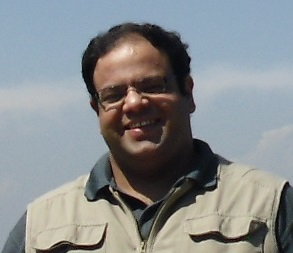India is hosting the Call to Action Summit on the 27-28 August in New Delhi. The summit is focused on ending preventable child and maternal deaths, and will be co-hosted by the Ministry of Health and Family Welfare, the Government of India, the Ministry of Health Government of Ethiopia, USAID, UNICEF, the Bill & Melinda Gates Foundation, and Tata Trusts. The summit will bring together health ministers from 24 priority countries (contributing 70% of the world’s child and maternal deaths) which signed on to a global call for action for child survival in June 2012 along with researchers, policy makers, funders, experts, and representatives from industry, civil society, and media. The meeting has an interesting and packed agenda. It would be good to see a discussion on the following areas during the summit:
a) How to make public healthcare more sensitive and patient-focused: in the pursuit of targets, such as those listed in the UN Millennium Development Goals, it’s necessary to ensure that the experiences pregnant women face are sensitive, devoid of corruption, and not abusive.
b) It’s important that maternal health is situated within a larger alignment of the health system to womens’ health needs. This requires a comprehensive approach which does not just highlight the health needs of women only during their reproductive years, but throughout their lifetime. Healthier girls, adolescents, and women will also be healthier mothers (in the case of girls and adolescents when they grow up) with better outcomes for their children.
c) Vaccine hesitancy is increasing in many low and middle income countries (LMICs) too. It’s important that the deliberations on existing vaccines (increasing coverage), and newer vaccines (introduction and scale-up) ensure the inclusion of a transparent dialogue and process on addressing genuine concerns about vaccines—on risks, safety, cost, sustainability, and evidence for utility in the local health system. This should include elements of public engagement.
d) Acquiring a commitment for higher investments in the public health system from the countries: as an example, the summit host country India has among the lowest public health expenditures in the world (as a proportion of GDP). While the Indian government has recently indicated an intent to hike the public investment in healthcare from the current 1.04% of GDP to 2.5% of GDP by 2020, this increase seems to be facing opposition from a key government policy think-tank.
e) Explicit attention to the need to address nutritional needs is required. In most of the countries involved in the summit, children, adolescents and women are deficient nutritionally. Any effort towards addressing child and maternal mortality needs to tackle the nutritional needs of the target population—this requires ensuring funding for programmes devoted to food security for all populations, provision of quality food, and provision of nutritional supplementation (such as iron and folic acid) where needed.
f) Clearer metrics for evaluation of accountability of all the stakeholders in maternal and child health—including the public health sector, but also civil society and the private sector. Any partnerships developed should also have policies to handle conflicts of interest which might arise.
g) The time has come to demand that the voices from the community be included in global deliberations like the summit. It’s not just enough to include civil society leaders in the meeting, but paramount to encourage participation and listen to the experiences and demands of those who the summit aims to serve: women and children. While such participation does not seem explicit in the summit, planning for future meetings should include community engagement and a participation process.
Anant Bhan is a researcher in global health and bioethics, and adjunct visiting professor at Yenepoya University, India. He tweets on global health, health policy and bioethics on his Twitter handle @AnantBhan.
Competing Interests: I have read and understood BMJ policy on declaration of interests and declare the following interests: None.
